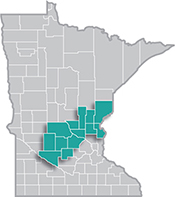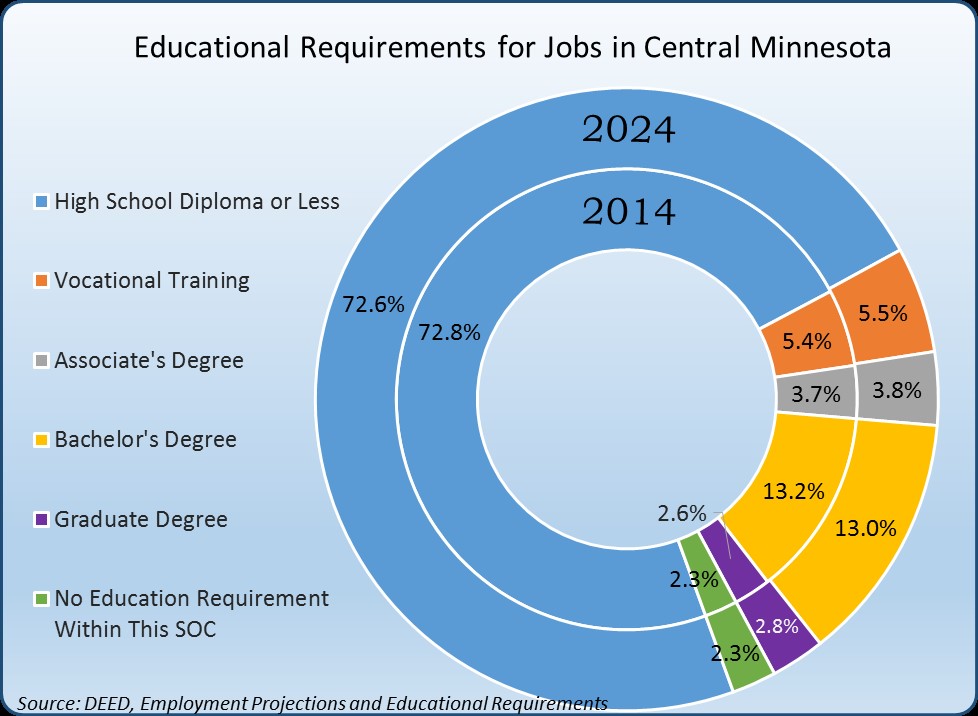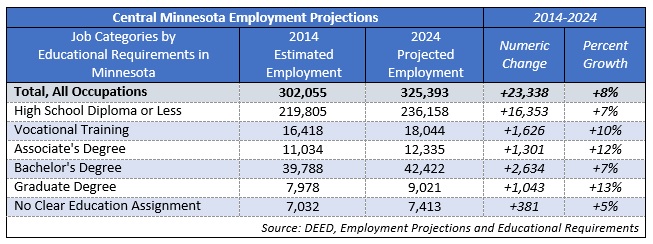 Central Minnesota is a manufacturing stronghold, with several global manufacturing firms operating there.
Central Minnesota is a manufacturing stronghold, with several global manufacturing firms operating there.
The region is especially well known for its expertise in food processing, printing, furniture manufacturing, appliances, machinery and heavy equipment manufacturing.
View our latest blogs on CareerForce. Want the freshest data delivered by email? Subscribe to our regional newsletters.
4/25/2017 10:09:32 AM
Luke Greiner
Central Minnesota, like many regions of the state and nation, is facing a demographic shift that will have wide ranging implications in the labor market. Baby boomers are aging out of the workplace; when this is coupled with an expanding, demanding economy, many employers find that workers are in short supply. Aligning educational offerings can help businesses fill highly demanded openings, and ensure graduates are met with ample opportunities for success.
Popular narratives often suggest that our economy will need a large increase in college-educated workers to meet the employment opportunities of today and tomorrow. However, analyzing the current and projected economy tells a different story.
Thanks to a recent project by DEED to update and modify the list of typical education requirements for occupations in Minnesota, we now have a more accurate resource to match education levels with occupations. Using the new classifications to analyze current and future employment projections, the illustration below highlights two key points:

What’s clear about the economy, both now and in the near future, is that most employment opportunities can at least be started without college or other types of higher education. What isn’t clear is the extent of employer-provided training needed, and how many of these skills can be fostered “in-house” for career advancement.
With so much talk about the skills gap, but relatively few jobs requiring two- or four-year college degrees, it appears that simply increasing college enrollment would be an incomplete and ineffective response. After all, 70 percent of Minnesota high school seniors already enroll in college in the fall after graduating. A better approach might be to ensure students are learning what programs have jobs waiting for them to fill, while also increasing college completion rates. Identifying specific skills rather than award levels also has the potential to direct funding and students where they’re needed most.
The low ratio of jobs requiring college doesn’t mean that college is unnecessary, or even less important in the future. In fact, jobs requiring post-secondary training such as graduate degrees or associate degrees are expected to grow the fastest in the next decade (Table 1).

Knowing the true skill and educational needs of Central Minnesota is critical to understanding how to address a labor force that will be growing much slower in the future. If they decide to take the post-secondary path, students would benefit from reading What to Know Before You Owe, published in Minnesota Economic Trends (September 2016).
For more information on educational needs in Central Minnesota, contact Luke Greiner at 320-308-5378 or email Luke.Greiner@state.mn.us.